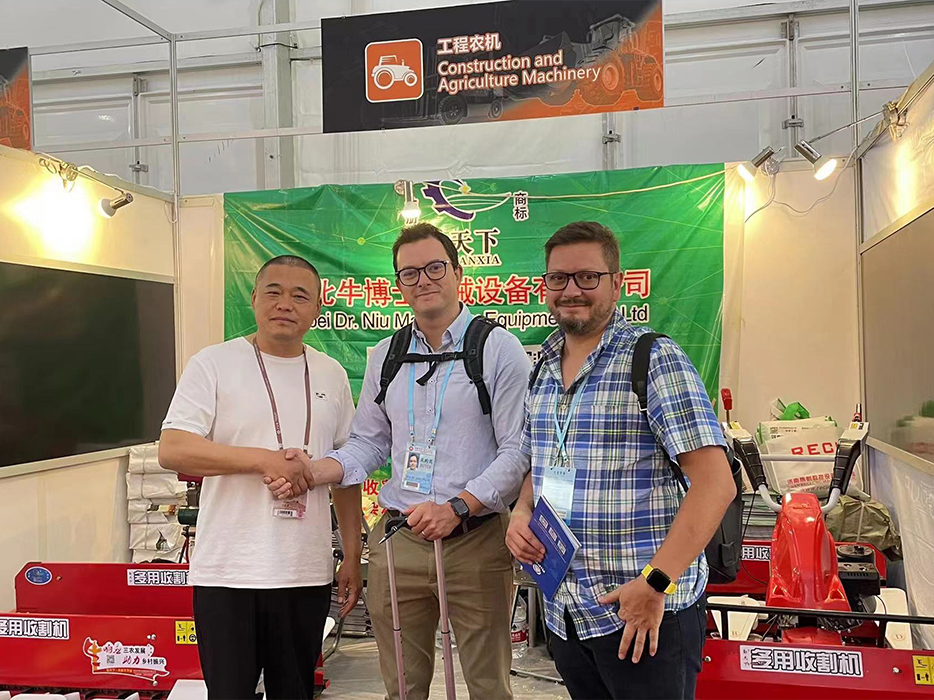maize harvester machine
The Importance and Evolution of Maize Harvester Machines
Maize, commonly known as corn, is one of the most significant staple crops globally. Its cultivation spans across various continents, creating an essential component of food security and agricultural economy. With an increasing demand for maize, the efficiency of its harvest has become crucial. This is where maize harvester machines come into play, revolutionizing the way farmers approach maize harvesting.
Understanding Maize Harvesting
Traditionally, maize harvesting was done manually, a labor-intensive process requiring considerable time and effort. Farmers would rely on hand tools, which not only slowed down the process but also resulted in significant crop waste. As agricultural practices evolved, so did the tools and technology associated with farming, leading to the development of specialized machinery designed to streamline the harvesting process.
The Evolution of Maize Harvester Machines
The first maize harvesters were relatively simple devices that assisted in gathering maize ears from the stalks. Over the years, advancements in engineering and technology have transformed these machines into sophisticated, multifunctional equipment. Modern maize harvester machines now come equipped with features that enhance efficiency, reduce labor costs, and minimize crop waste.
The introduction of mechanized harvesters has been pivotal in maximizing productivity. These machines are designed to perform multiple tasks including cutting the stalk, shelling the ears, and separating the kernels from the cob. This process not only speeds up harvesting but also ensures that a larger portion of the crop is collected and saved, significantly improving yield.
Types of Maize Harvesters
There are several types of maize harvester machines available on the market today, varying in size, capacity, and functionality. The two primary categories include self-propelled harvesters and towed harvesters.
Self-propelled harvesters are equipped with their own engines and are highly versatile, allowing them to navigate uneven terrains and cover large fields efficiently. These machines can adapt to various harvesting conditions, making them suitable for different farming practices. They usually have advanced features like GPS guidance and automated settings, enhancing precision during the harvesting process.
Towed harvesters, on the other hand, are designed to be attached to tractors. While typically less expensive than self-propelled models, they require a tractor to operate. These machines are ideal for smaller farms or those just starting with mechanization, providing a more budget-friendly option without compromising on functionality.
maize harvester machine

Benefits of Using Maize Harvester Machines
The adoption of maize harvester machines has several benefits, making them indispensable in modern agriculture.
1. Increased Efficiency One of the most significant advantages is the speed at which harvesters can operate. A manual crew may take days to harvest a field, whereas a machine can complete the same task in just a few hours.
2. Labor Cost Savings With fewer hands needed on deck, farmers can significantly reduce labor costs, allowing them to invest more in other areas of their operation.
3. Reduced Crop Loss Modern harvesters are designed to minimize waste. By efficiently collecting and processing maize, these machines ensure that a greater percentage of the crop is harvested, leading to higher yields.
4. Improved Quality The precision of machines means that the quality of the harvested product is often better, reducing the likelihood of damage to the maize compared to manual harvesting.
Challenges and Considerations
Despite the numerous advantages, farmers looking to invest in maize harvester machines should consider several factors. The initial investment can be substantial, and ongoing maintenance costs must also be factored into the budget. Moreover, operators need training to fully utilize these machines and ensure optimal performance.
Conclusion
The evolution of maize harvester machines marks a significant milestone in agricultural practices. As technology continues to advance, these machines are likely to become even more efficient and user-friendly. Embracing innovation, farmers can meet the growing demand for maize while ensuring sustainability and profitability in their operations. The future of maize harvesting looks promising, driven by machinery that enhances productivity and secures food resources for generations to come.
Latest news
-
When to Upgrade Your Old Forage HarvesterNewsJun.05,2025
-
One Forage Harvester for All Your NeedsNewsJun.05,2025
-
Mastering the Grass Reaper MachineNewsJun.05,2025
-
How Small Farms Make Full Use of Wheat ReaperNewsJun.05,2025
-
Harvesting Wheat the Easy Way: Use a Mini Tractor ReaperNewsJun.05,2025
-
Growing Demand for the Mini Tractor Reaper in AsiaNewsJun.05,2025
